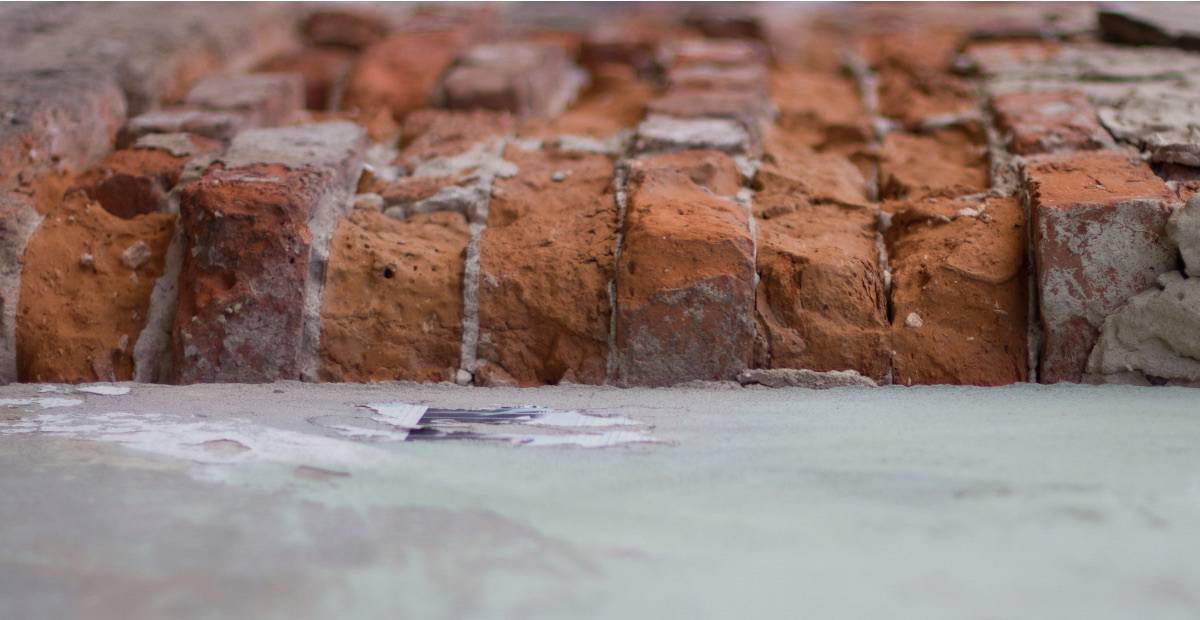
What is Brick Spalling?

What causes bricks to crumble?
Spalling damage to bricks happens over time, when bricks get wet. Since bricks are made of a clay which is a porous material, they easily absorb water. When the temperature drops that water will freeze and expand, as water does when it freezes. As it expands, the ice will push small pieces of the brick out of it’s way. That can create a small crack. As the weather warms back up the water will melt and run out of the brick. The next time this process happens though, it’s a little different because now the water can fill that small crack that was created by the expanding ice. When that water starts to expand, that little crack will get just a little bit bigger. You can see where this is going. Eventually, you’ll have large cracks or even deteriorating brick. Sometimes the front layer of a brick will flake off. That is known as brick spalling.
Since the process occurs when it gets cold, it’s something to keep in mind if you live in a colder climate. Yearly checkups and maintenance should be part of your winterizing routine.
You’ve probably never thought of your house absorbing or holding on to water, but it can be a frequent occurrence if it’s not properly protected. There’s a lot of moisture in the ground that bricks can absorb, especially if you’re rain runoff isn’t properly funneled or your land isn’t sloping away from the house (known as grading).
Most houses are built with accommodations for water runoff. Having a runoff spout on your gutters that funnels water away from your foundation is one way to keep your bricks dry. This is a pretty basic thing that every home should have. Sometimes they are a simple piece of concrete that looks a little like a small slide sitting under your gutter. When rain comes out of the end of your gutter it hits the concrete slide which gives the rain a little more runway to land away from your home. Without those the rain would just exit the gutter and fall straight down, landing much closer to your foundation. It’s best if the ground around your home is sloped slightly away from your house. That will help excess water drain away from your home too.
Plus most foundations and outer walls are built with bricks that are extra solid and sturdy, not soft bricks that can absorb more water.
How to protect your bricks from spalling
Obviously you need to protect your foundation from moisture, but any place you have bricks or stone (and sometimes even concrete can be affected) is susceptible to damage. Think about retaining walls in your yard and your chimney. These areas are in the most danger because the run off precautions are not as abundant.
To protect your chimney, you need a rain or snow cap that is properly installed.
Consider adding a cap to a retaining wall, too. Think of it as the roof of the wall. A design feature on the top of the wall that allows water to easily run off and away from the bricks. A larger piece of stone that creates a ledge at the top will work. That will cause rain to fall off a few inches away from the rest of the wall. You can also buy aluminum or stone pieces shaped like triangles, depending on your desired style.
How to prevent brick spalling:
- Ensure water is properly draining from around your foundation
- Install a snow/rain cap on your chimney
- Avoid pressure washing your brick, which can weaken it.
- Check your house for leaks. Leaking water might not fall into the protections you’ve set up, so make sure you know when that’s happening.
- Inspect your brick and your chimney regularly to look for cracks. Call a specialist if you find any, so you can step up your precautions.
- Keep crawling vines in check. They might look beautiful covering an old brick house, but they can trap moisture.
What causes chimney brick spalling?
Chimneys are in specific danger of spalling or crumbling. If your chimney develops cracks or weak bricks, you could be in danger of losing the whole thing. Have you ever seen a dilapidated house where the fireplace portion of the hearth was still in tact, but the top of the chimney is missing? That’s what moisture can do to your chimney. Since the walls of a chimney are much smaller than the walls of a house, each brick has more responsibility for holding the structure up. Pros recommend doing yearly maintenance on your chimney to check for cracks or disintegration. A properly installed snow or rain cap will go along way. If you get a ton of snow in the winter, keeping it off of your roof will not only protect your roofing but also your chimney.
What to do if you have damaged bricks
- Talk to a professional. Your first stop should be to include someone who is knowledgeable about what to look for. They will have a full recommendation about what you should do. But it may include some of the following:
- Fix any leaks. Stopping random sources of water is definitely a necessary step.
- Seal bricks, if necessary. If you already have some cracking, that means you have a problem with moisture in your bricks, so sealing them off is a good idea to prevent further damage.
- Sometimes, replacing some bricks might be required. You don’t want a weak brick in the middle of your foundation or chimney.
How do you DIY fix spalling bricks?
The solution is two fold – replaced the damage and making sure it doesn’t happen again. To fix spalling or crumbling bricks follow these steps:
- Call a professional masonry! We can’t stress this enough. You need expert advice about how to proceed.
- Fix the moisture problem. You don’t want to have the same thing happen all over again.
- Grind out the mortar with a specialized tool or drill to release the bricks or stones.
- Remove the cracked bricks by cutting them out with a diamond saw or cast iron masonry blade. Be sure to clean out all mortar and debris.
- Be very careful not to crack any of the other bricks in the wall.
- Place new bricks. Be sure to use materials that match the original construction.
- Mix mortar mud and add to the bottom of the hole and sides of the brick.
- Place and tap the brick into place.
- Tuckpoint the mortar and the top of the brick. Make sure to match the width of the current mortar.
- Let everything dry to harden.
- Clean off the excess mud with a brush followed by a
- Repeat for every brick that needs to be replaced.
Watch this video from Accurate Masonry to see exactly how to remove the bricks and the second one to learn how to replace them.
Brick spalling sealant
Sealing bricks sounds like the perfect way to protect them from water, but the problem comes in the reality of applying the sealant. How do you know the bricks are completely dry and you’re not just trapping the moisture inside? That could actually make the problem worse instead of better. This is an example of why and when you need professional advice.
Lesson learned: protect your bricks!
As you can see, brick damage can happen rather easily. Keeping up with yearly maintenance is crucial to ensuring a long life for your brick wall or chimney. After a long rainstorm, check to see what the water is doing around your house so you can identify any problem areas. Be sure to address any issues before wintertime.

Disclaimer: The information contained in this website is not to be used as legal or financial advice. Any action you take from information on this website is at your own risk.
Starmark Home Inspections
We want to be your building consultant for life! That's one of the reasons we write this blog - to provice you with helpful information.
We offer all of our clients free home advice for life -- call us one month or five years after your inspection and we'll answer your questions about your home!
To Get The Most Comprehensive Home Inspection in the Charlotte Area, Give Us A Call Today (704) 606-8333 Or Click Here To Schedule Online Now!
Read More from Our Blog
Here at Starmark Home Inspections, we love talking anything and everything homes! Look around for fun DIY projects, home maintenance tips, and easy upgrades you can make to your home.
Starmark Home Inspections - Proudly Serving the Charlotte Area for 13 years
We perform quality home inspections all throughout the Charlotte metro area in both North Carolina and South Carolina, including Waxhaw, Fort Mill, Ballantyne, Indian Trail, Matthews, Lancaster, Indian Land, Weddington, Stallings, Mint Hill, Harrisburg, Huntersville, Mooresville, University, Concord, Cornelius, Lake Norman, Davidson, Lake Wylie, Tega Cay, York, and Sun City Carolinas.
Call Us Anytime
704-606-8333
We're happy to answer your questions!
M- F: 8am - 7pm
Sat: 8am - 2pm
Sun: closed
704-606-8333
john@starmarkinspections.com
Send us an Email
10900 Winterbourne Ct Charlotte, NC 28277


